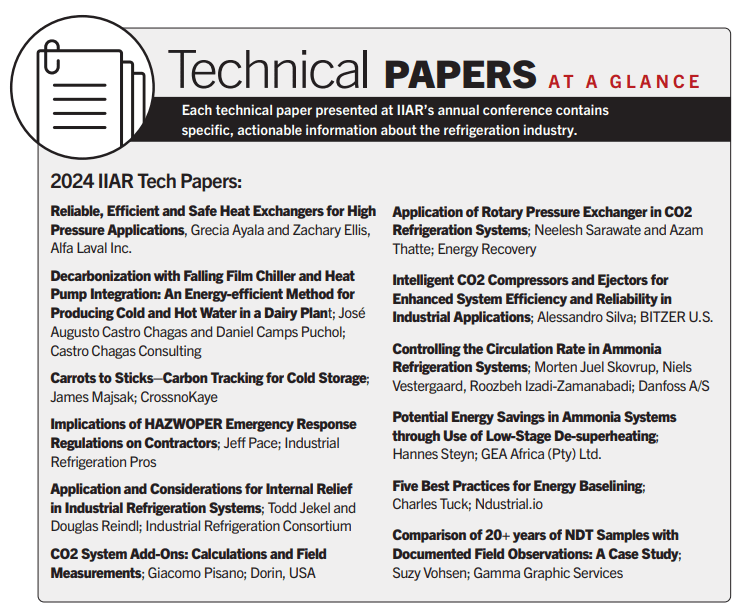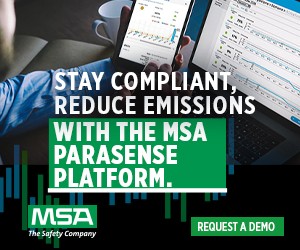Technical Papers Provide In-Depth Thought Leadership at the IIAR Conference
Eric Smith, IIAR’s vice president and technical director, said the papers provide breadth, depth, and applicability that isn’t generally combined at other refrigeration-specific conferences. Several papers stand out within this year’s lineup.
“Application and Considerations for Internal Relief in Industrial Refrigeration Systems” by Todd Jekel and Douglas Reindl, Industrial Refrigeration Consortium, addresses the appropriate use of vapor and liquid pressure relief devices.
“Liquid relief devices especially have been observed to sometimes be inappropriately installed,” Smith said. “
The paper hopes to clear up when liquid relief should be used and how to provide appropriate calculations when it is used.”
The paper will provide much-needed guidance to the industry on the appropriate applications of relief valves and guide the industry on the best devices for overpressure correction. “The IIAR Standards Committee will likely use it to refine the IIAR-2 Standard,” Smith added. The paper “Controlling the Circulation Rate in Ammonia Refrigeration Systems” by Morten Juel Skovrup, Niels Vestergaard and Roozbeh IzadiZamanabadi with Danfoss A/S details an innovative technique to lower charge by sensing the quality of the leaving refrigerant.
“Our paper will introduce a new solution for controlling evaporators in ammonia systems. Controlling evaporators correctly is crucial for enabling low ammonia charge,” Skovrup said, adding that presenters will share results from testing the control solution in lab and field tests.
The new control solution ensures the control of the injection of ammonia into evaporators but does it in a way so that the efficiency is not compromised. “The control solution is plug and play, and can in many cases be used for retrofit,” Skovrup explained.
Lowering the ammonia charge can reduce risk, but it needs to be done to maintain system efficiency. “Furthermore, lowering the ammonia charge – but especially controlling it – can increase the efficiency of the entire system by minimizing pressure drops, especially in suction lines,” Skovrup said.
“Application of Rotary Pressure Exchanger in CO2 Refrigeration Systems” by Neelesh Sarawate Azam Thatte and Karina Lao; Energy Recovery, highlights application of a rotary gas pressure exchangerto increase efficiency of transcritical CO2 refrigeration systems.
According to the paper, CO2 Refrigeration systems with rotary gas pressure exchangers have been installed at multiple supermarket locations in Europe and North America. These devices have operated over several months at these locations and have demonstrated +30% energy savings while maintaining smooth control of gas cooler pressure and handling a wide range of loads.
“It appears to be an innovative way to make CO2 systems that operate transcritcally more efficient by reusing the energy that would normally be lost in the expansion of the supercritical gas,” Smith said. “This is important because the use of CO2 systems is anticipated to become more and more prominent in high ambient temperature conditions. It is crucial to manage efficiency as best you can.”
The availability of a new and innovative technique to increase transcritical operating efficiency could potentially help generate more prolific use of CO2 systems in high ambient conditions.














